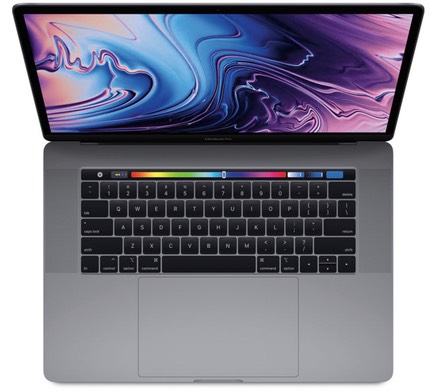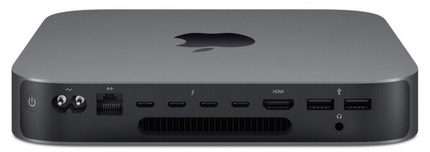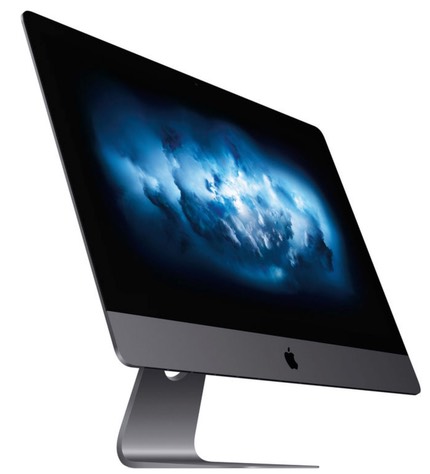Updated for latest November 2020 Announcements with Apple Silicon

These days I’m a Macintosh-only user. For a long time, I maintained both Windows and Mac systems, but something had to go to simplify my updating life, and that turned out to be things with Microsoft written on them.
I regularly help others with Mac system recommendations, and I try to keep up with everything happening the in the Mac world. Here are my current thoughts.
- First and foremost, if you’re considering any upgrade from a base model, stuff it with RAM first. More intelligently—if it’s a model that allows user-upgradeable RAM—buy the computer from Apple (or a store such as B&H [advertiser link]) with minimal RAM and use a reputable company such as OWC to get a lower-cost option for the same upgrade. Apple’s prices for extra memory are generally too high.
- CPU’s and clock speeds aren’t nearly as important as they once were. Any i5 or higher processor tends to be just fine for most photographic work. It you want to upgrade the computing horsepower to your new Mac, pay close attention to the GPU (video) card. Not all software will take advantage of a dedicated GPU with extra RAM, but software that does tends to perform far better in photographic tasks on such machines than on the base models with embedded Intel graphics that use regular RAM.
- The introduction of Apple Silicon (M1 processors, currently) was a significant change. If you're considering a model that has the option of getting it with Apple or Intel processors, I'd generally recommend the Apple processor now. I'll have more to say about that, below.
Apple has slowly moving away from hard drives. I advise getting an SSD over a spinning drive, but technically for most photographic work all that’s going to do is speed up your application start times and perhaps your final document saves (assuming you stick your files on the main drive, which I generally don’t recommend). A Fusion drive option (SSD cache+hard drive), if available, is okay, but looking older and slower the more we move to solid state. I’d tend to avoid the spinning platter drives these days. So: First choice: SSD. Second choice: Fusion drive. Not-a-choice: hard drive.
Pretty much any new Mac these days can run Photoshop decently, though at the bottom end of the lineup you might find yourself getting noticeably slower processing on big files. That makes things easy for me in recommending models. Here’s where I think you should spend most of your time thinking about Macs:

- MacBook Air. This 13" machine was completely revised with the December 2020 release of an Apple Silicon model (M1 processor). Intel processor versions are no longer current. It was near impossible to recommend the older version with its outdated, non-Retina display to a photographer for a number of reasons, but all my complaints about the MacBook Air go away with the latest model. The MacBook Air is now the low end portable in Apple's lineup, and surprisingly, even the US$999 model is competent for photographers (though I recommend you get more memory).
The big claim to fame for the Air has always been "all day battery life." Apple is still advertising that, but be aware that to Apple that means about 18 hours of regular desktop type use. Start running the CPU aggressively with something like Photoshop CC and that number will go down.
The base model is US$999 and features a M1 CPU, 8GB RAM, and 256GB of SSD. That's not really sufficient for serious photography use. You can't upgrade the processor, but you can opt for 16GB of RAM and 512GB of SSD storage, which would be my minimal configuration to recommend. Price for that is US$1499. The interesting thing is that these prices are lower than the equivalent Intel MacBook Air models. So not only are these better machines, but they've become less expensive. Just remember that the big drawback here is no internal changes are possible after you buy. B&H Link [advertiser]

- 13” or 15” MacBook Pro. These have long been many photographers’ go to portable machines. The most recent additions add wrinkles that are causing controversy, but the bottom line is still the same: these are great machines when configured correctly. All of them have a wide display gamut (P3) that’s bright, and all are Retina displays. You can go a bit smaller and lighter (13”) or you can go full out and get the cream of the crop (15”).
The elephant in the room is the 13" model with the Apple M1 processor versus the 13" and 15" models still available with Intel processors. Let me be controversial here: if you're not interested in the 13" M1 options, wait until Apple introduces new higher laptop models in 2021.
I generally travel with a 15” that’s pretty much the best Apple sells, but I also have one of the new M1 13" models. Because of the transition to Apple Silicon, I'm only recommending the M1 models: Recommended models: 2020 13” M1, 16GB RAM, 512GB SSD for the low end (US$1699). B&H link [advertiser] If you can afford it, get more SSD storage.

- Mac Mini. Returning with a total M1 CPU refresh is the Mac Mini. For most folk, this model is worth looking at for a basic desktop computer. Just be careful of one thing: by the time you add a monitor, keyboard, and mouse, you can upgrade a Mini to iMac price levels. Still, Apple is now packing a lot of power in a small box that's just shy of three pounds, and that is highly welcome.
Like the other M1 models, you're limited to a choice of 8GB or 16GB of RAM. Always get 16GB. SSD storage comes in 512GB, 1TB, and 2TB options; get as much as you can afford.
The new Mini loses the SD slot, but has Headphone, Ethernet, two Thunderbolt 4 (!) (USB-C 3.1 Gen 2), HDMI 2.0, and two USB 3.1 (old Type A style, up to 5Gbps) connections on the back. The little box can drive as many as three external monitors (one via HDMI, two via Thunderbolt).
I no longer recommend the Intel Mac Minis, so this poses one small issue: 16GB of RAM is a limitation for a desktop computer. Make sure you can live with that limit. B&H link [advertiser]

- iMac 21" Retina 4K (2019 model). This was a very welcome iMac option and was last updated in 2019. Apple has finally moved many of their recent capabilities into the lower end of the iMac lineup, and that has produced a very good compromise with a more modest price than usual for Apple. Here's the minimum level I'd consider for photography: 3.0Ghz i5, 4K display, 16GB RAM, 512GB SSD. That model lists for just shy of US$2000. You can trick that out to a 3.6Ghz i7, 4K display, 32GB RAM, 512GB SSD, which hits US$2600. Any of the options from that lower model I note to the highest end should serve you well for quite some time. B&H link [advertiser]

- iMac 27” Retina 5K (2020 model). This is really the meat of Apple's desktop computer line. There are a lot of options here.
Think of the 5K iMac as a really, really good high resolution monitor that comes with a nearly free, great computer. The monitor has a wide DCI-P Color Space (about the same size as AdobeRGB, but slightly shifted in which colors its extends). The DCI-P iMac Retina Color Space is a video-defined Color Space, but it’s still very good for a still photographer, and it’s what Apple is now standardizing on across the iPad and Macintosh line. It’s a better Color Space than sRGB and what most other monitors give you, for sure. The one drawback I find to the iMac display is this: it’s too reflective. You’re not going to want a window or a light source behind you. I personally prefer matte displays, but the iMac is more towards the glossy spectrum.
The 2020 update once again caught the iMac up to the latest and greatest Intel processors and AMD GPUs, and that provides a mild boost from the older models. Now even the base machine is pretty well endowed in terms of CPU/GPU. But be careful of coupling slow spinning hard drives with these fast processors, even the Fusion drive combinations. Recommended models: start with the 3.1Ghz base model and trick it out, as needed. B&H link [advertiser].
But don’t buy Apple’s RAM options, if you can avoid them, as you can add perfectly fine and less expensive RAM from OWC, as I noted above. Indeed, you can add 32GB for about US$230, which should be more than enough for most people. Do get an SSD as your main drive; don’t opt for the Fusion choices. Whether you upgrade the CPU and GPU depends upon whether you think the extra price is worth a bit of future proofing your computer or not. Alternatives: use a MacBook Pro 15” with external monitor(s), or opt for the pricey but powerful Mac Pro. Frankly, the Mac Pro is overkill for photography, but will make videographers sleep easier.

- iMac Pro. This is a top end computer that should hold some appeal to photographers, particularly those that also do video. I use the words "some appeal" because the things the model changes from the 27" Retina 5K model really appeal more to videographers than still photographers, particularly now that Apple has updated the basic iMac in 2020; still photography performance is about the same as the plain iMac Retina 5K. This new Pro model can have up to 18 cores, but most photography software doesn't use multiple cores efficiently. On the other hand, video compression usually does, particularly Final Cut Pro. The iMac Pro model does have better GPU options and the ability to cram up to 256GB of RAM and a 4TB SSD inside, though, so for those trying to future proof their system as much as possible, maybe it makes sense. The price is on the insane side, though. I really see this model as overkill for almost all photographers, but on the other hand it will be a really slick product for pro videographers in need of speed. My preferred model after doing a bit of testing on the 2017 models was: 8-core, AMD Radeon Pro Vega 56, 32GB, 1TB SSD, but that's a whopping US$4650 (Apple lowered the price recently). B&H link [advertiser] But like the MacBook Pros, you must get the iMac Pro configured exactly as you wish from the get go, as there is no user upgradeable option. That's exactly where the model starts to get insane in the pricing, as Apple overcharges for processor, RAM, and SSD options.
What, no Mac Pro? No. Maybe for a video producer, but the iMac Retina 5K is a better choice for a photographer, the iMac Pro a reasonable choice for most videographers. Buying into Apple's Mac Pro models and 6K display puts you squarely into new car price territory, and you really need a good reason to go there.
So, a few things I've glossed over:
- Pricing. Apple's pricing used to be something people complained about ("you can find a PC that's cheaper"). Apple has always been a high-quality provider (in pretty much every way), but the change to Apple Silicon processors has actually had an interesting effect: Macs got cheaper, yet even better! Having now used an M1-based MacBook Pro for awhile, I can say this: it's a far better laptop than the MacBook it replaced, and it cost far less. Moreover, you might have noticed that places like B&H actively tend to discount various models (usually for short periods, but this is becoming more prevalent). I generally regard Macs as good return for cost these days.
- M1 processor. Yes, it's fast and noticeably so. And low power (which makes the MacBooks run for insane periods with a lot of work). And sophisticated (built in multiple GPUs and machine learning components speed up a lot of work beyond the CPU itself). The real benefit the M1 has, though, is that it doesn't have to talk to external RAM (RAM is built into each processor). There's no external bus controller getting in the way of fetching memory. This makes the M1 Macs really fast when the memory being worked on is in the processor. That, coupled with very fast SSD means that even virtual memory—which you're almost sure to trigger with big photo files—seems fast. Since you can't upgrade the RAM, I do recommend that you max out the SSD storage on your M1-based Mac. That's the way you maximize performance.
The other thing that sometimes holds up potential Apple Mac updaters is the retirement of Firewire (and now Thunderbolt 2 and the old style USB on the portables), coupled with the need for high-speed external drives if you need lots of storage. Most of us photographers need plenty of drive space.
Don't fear moving from Thunderbolt 2 to 3: it's a cable dongle. And at this point, Firewire drives are becoming harder and harder to find, and certainly don't perform at the levels of Thunderbolt 3, but it's still just coupling two cable dongles together.
The typical hard drive answer for both Mac desktop and laptop is a USB 3.1 or Thunderbolt RAID. Or two. Or four. The temptation is to cheap out and just buy one external enclosure and mirror the drives in it. I say no. If you’re going for performance, buy two external enclosures and mirror one on the other. You can then also choose between RAID 0 (performance) or RAID 1 (additional mirroring) depending upon your paranoia level. How did I get to four RAIDs? Paranoia and video, in combination.
I've been using RAIDs from a number of companies. The best of the bunch so far is the one that Apple themselves sell: the Pegasus (comes in four, six, and eight bay configurations). B&H sells the two larger capacity Pegasus options [advertiser link]
On my iMac Retina I've tended to have two main RAIDs: one running in RAID 1 (mirror) for application and photo data, and the other running RAID 1 for video, though I'm in the midst of changing that as I upgrade. The RAIDs are automatically backed up by Carbon Copy Cloner, but each individual RAID with data is also a mirrored setup to another RAID pair, so it’s a redundant backup. Plus, of course, I have a Time Machine drive and a backup of the SSD, plus off-site backups. Yep, a lot of cables, and a lot of copying going on in the background (mostly in the office overnight time thanks to Carbon Copy Cloner).
The good news is that with Thunderbolt 3 and the latest iMacs and MacBook Pros use can be daisy chained to drives, so that cable situation is well under control. The real issue is all the power cables for the RAIDs, all of which have to go to a UPS, which in turn is plugged into a whole office surge protection system.
I sure miss all those internal drive bays of the old Mac Pro (seven if you use third party tools to create them).
